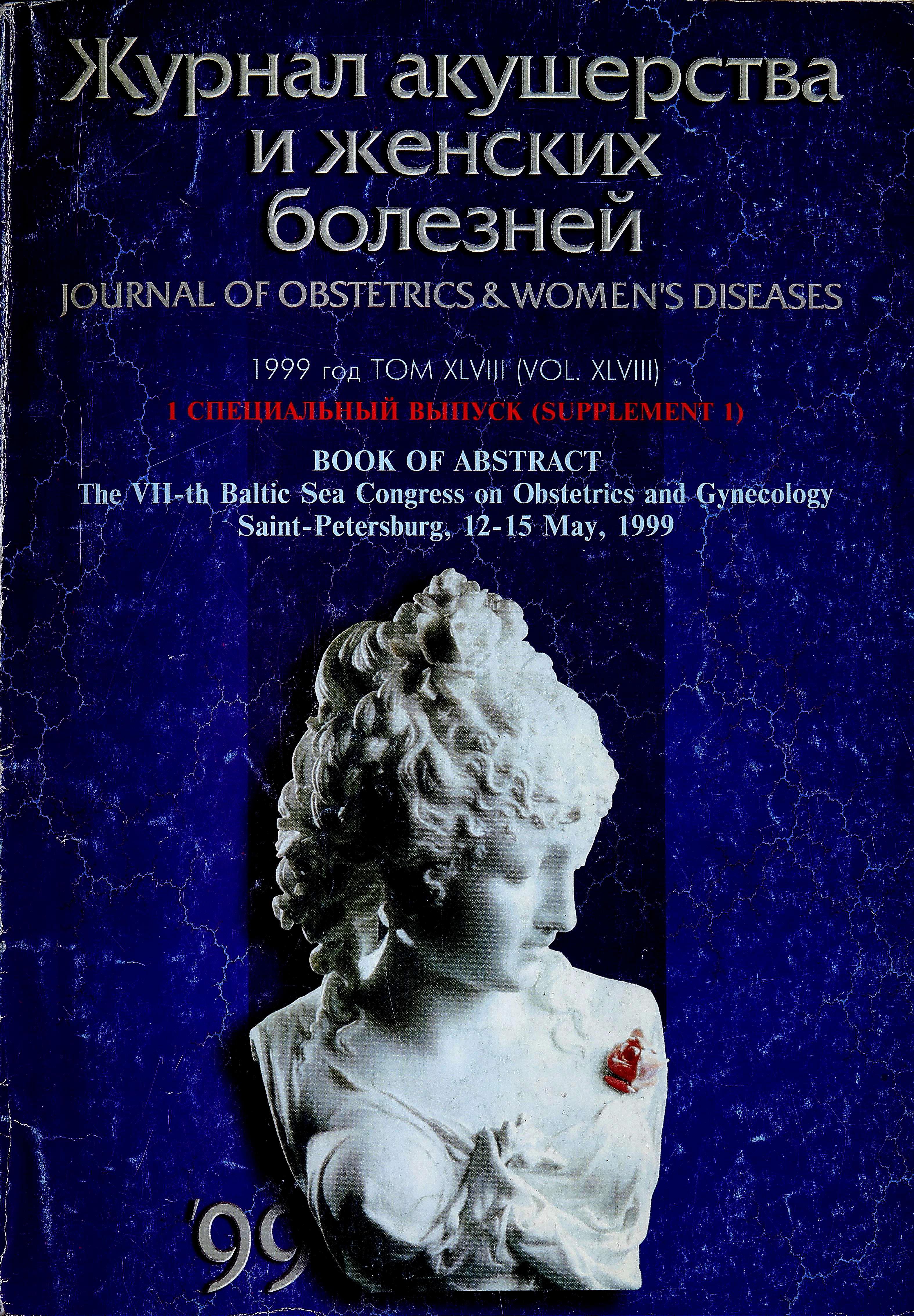Fetal cells in maternal circulation
- Authors: Takabayashi H.1,2, Takahashi H.1,2, Ozaki M.1,2, Kita M.1,2, Kuwabara S.3, Ukita T.3, Yamafuji K.3, Ikawa K.4
-
Affiliations:
- Medical Research Institute
- Kanazawa Medical University
- Ukita Hospital
- Ishikawa Health Service Association
- Issue: Vol 48, No 5S (1999)
- Pages: 156-156
- Section: Articles
- Submitted: 22.02.2022
- Accepted: 22.02.2022
- Published: 15.12.1999
- URL: https://journals.eco-vector.com/jowd/article/view/101452
- DOI: https://doi.org/10.17816/JOWD101452
- ID: 101452
Cite item
Full Text
Abstract
Advances in molecular genetics have led to prenatal DNA diagnosis. Molecular geneticists are currently using either an invasive or noninvasive approach for prenatal diagnosis. The research has been focussed in the last few years on the development of non-invasive techniques which do not harm the fetus. One such approach would be to isolate fetal cells from the maternal circulation.
Keywords
Full Text
Advances in molecular genetics have led to prenatal DNA diagnosis. Molecular geneticists are currently using either an invasive or noninvasive approach for prenatal diagnosis. The research has been focussed in the last few years on the development of non-invasive techniques which do not harm the fetus. One such approach would be to isolate fetal cells from the maternal circulation.
Several attempts have been made to detect and retrieve fetal nucleated cells including nucleated erythrocytes (NRBCs), leucocytes and trophoblasts in maternal blood. Fetal cells in peripheral maternal blood offer an alternative source for specimens to those obtained by invasive techniques such as amniocentesis, chorionic villus sampling and fetal blood sampling.
The non-invasive recovery of fetal cells has revolutionized fetal medicine and opened up the doors for its possible clinical application. Efforts are currently in the direction of enrichment as well as culturing of the fetal cells, and exploration of their further use in genetic analysis using FISH, PCR and PEP-PCR techniques.
We have developed a new method for non-invasive fetal DNA diagnosis from maternal blood (FDD-MB). We were successful in retrieving NRBCs from maternal blood using a micromanipulator and also in analyzing NRBCs on a single cell level by PCR, FISH and PEP-PCR. This new technique opens up fetal DNA diagnosis from maternal blood during the first trimester of pregnancy to the whole population because there is no risk to the fetus or the mother.
About the authors
H. Takabayashi
Medical Research Institute; Kanazawa Medical University
Author for correspondence.
Email: info@eco-vector.com
Japan, Uchinada Ishikawa
H. Takahashi
Medical Research Institute; Kanazawa Medical University
Email: info@eco-vector.com
Japan, Uchinada Ishikawa
M. Ozaki
Medical Research Institute; Kanazawa Medical University
Email: info@eco-vector.com
Japan, Uchinada Ishikawa
M. Kita
Medical Research Institute; Kanazawa Medical University
Email: info@eco-vector.com
Japan, Uchinada Ishikawa
S. Kuwabara
Ukita Hospital
Email: info@eco-vector.com
Japan, Ishikawa
T. Ukita
Ukita Hospital
Email: info@eco-vector.com
Japan, Ishikawa
K. Yamafuji
Ukita Hospital
Email: info@eco-vector.com
Japan, Ishikawa
K. Ikawa
Ishikawa Health Service Association
Email: info@eco-vector.com
Japan, Ishikawa
References
Supplementary files







